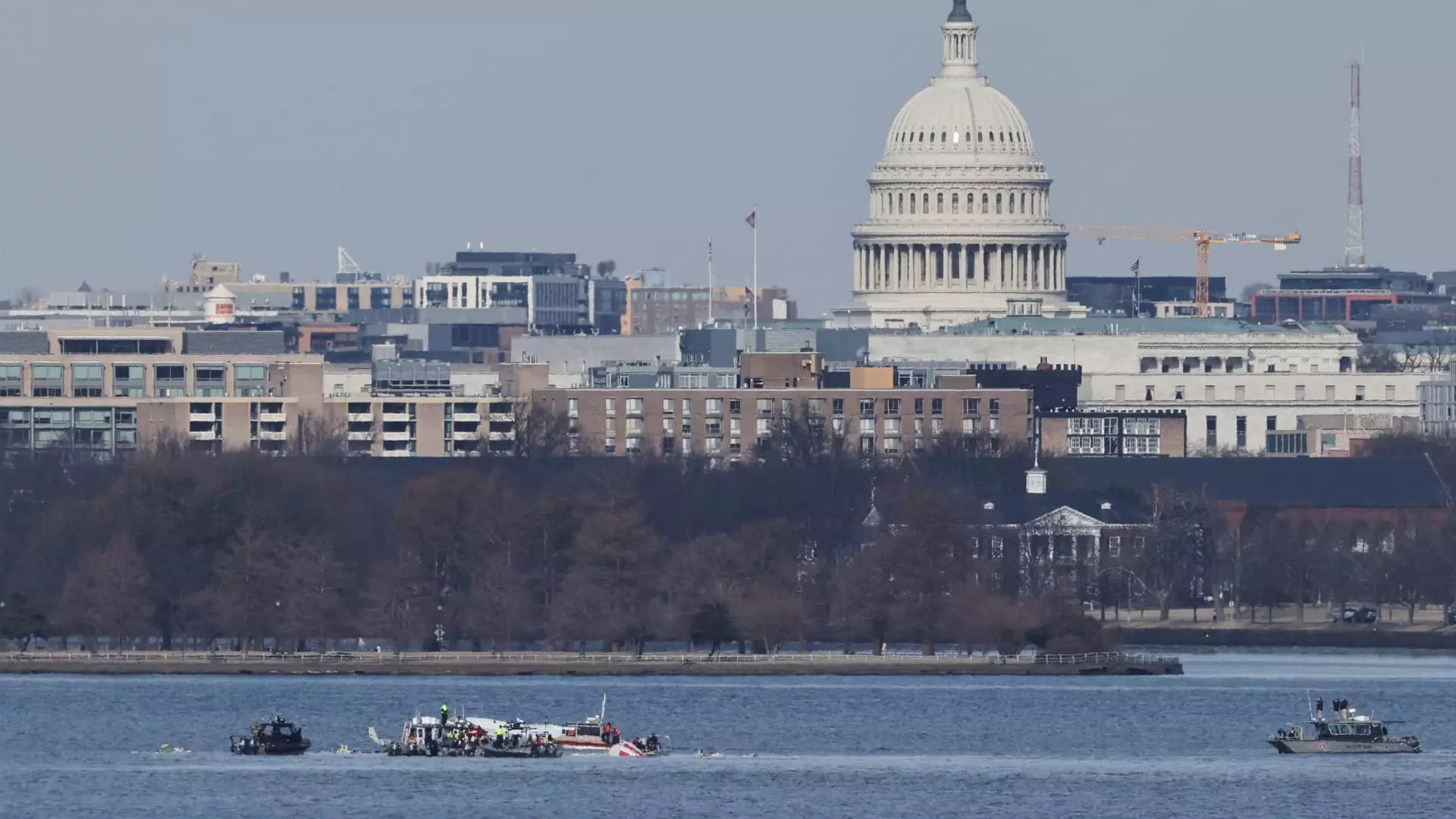On a seemingly ordinary Wednesday night, a catastrophic collision between an Army Black Hawk helicopter and American Airlines Flight 5342 unfolded over the Potomac River, resulting in a horrific loss of 67 lives. The incident, which occurred near Reagan National Airport, has shocked the nation, marking the worst U.S. aviation disaster since 2001. As investigators sift through evidence, the chilling questions surrounding the crash permeate the air: How exactly did two flying vehicles collide in such a congested airspace? What led the helicopter to breach the established altitude regulations? These questions could shape the discourse on aviation safety for years to come.
The military helicopter, which was engaged in an annual proficiency training exercise, collided with the Bombardier CRJ-700 aircraft while it was making its final approach to Reagan National’s runway. Both aircraft met in a fireball explosion that claimed all aboard, including the 64 passengers and crew members on the jet and all three military personnel flying the helicopter. The grim consequences highlight the inherent risks in a high-traffic corridor, prompting an immediate response from aviation authorities nationwide.
In the wake of the tragedy, the Federal Aviation Administration (FAA) is implementing new flight restrictions in the Washington, D.C. area. The inherent complexity of the airspace around such a major urban center is compounded by the unique operational requirements of military and civilian aviation. According to federal regulations, helicopters flying in this area must operate below an altitude of 200 feet. Any breach of these guidelines is a serious violation, especially in such a congested airspace.
National Transportation Safety Board (NTSB) member Todd Inman addressed the peculiar conditions of D.C.’s airspace during a briefing, noting the presence of designated “helicopter zones.” These zones serve to streamline the communication and procedures of the numerous military and civilian flights operating in relatively close proximity. The helicopter was reportedly transitioning between established tracks as part of standard protocol. In essence, the regulations exist to minimize risk, yet the event raises the question: Were these regulations followed?
The NTSB is currently leading an exhaustive investigation. They have begun aggregating flight data and recovering cockpit voice recordings in hopes of gleaning insights into the chain of events leading to the crash. Jennifer Homendy, Chair of the NTSB, emphasized the importance of patience and accuracy, suggesting the collected data has yet to yield definitive conclusions. However, the initial findings hint at “elevation issues,” a concern echoed by Defense Secretary Pete Hegseth and even President Donald Trump, who opined on social media that the helicopter was significantly exceeding the 200-foot limit.
In a highly rare move so early in an investigation, both governmental figures offered public statements on presumed regulatory failures, igniting debates around accountability in military and civilian operations. Those familiar with aviation safety protocols are acutely aware that premature conclusions can sometimes complicate ongoing investigations.
Operational Staffing Concerns
An FAA preliminary safety report has also brought to light potential shortcomings in air traffic control staffing at Reagan National Airport the night of the incident. Typically, there would be a dedicated controller monitoring helicopter traffic, a practice that helps to manage the unique demands of combining military and civilian airspace seamlessly. However, reports suggest that a supervisor permitted a controller to leave early due to reduced staffing levels, thereby creating a vacuum in the crucial management of D.C.’s air traffic.
This raises considerable concerns over the adequacy of air traffic management protocols, particularly in a city with heavy aviation traffic. It also suggests a larger issue in the aviation infrastructure, highlighting concerns over air traffic controller shortages that have captured attention in legislative circles. Such operational challenges could have played a part in a situation where communication and oversight were paramount.
The tragedy serves as a grim reminder of the potential for catastrophic failures in a system dependent on a delicate balance of regulations, operational protocols, and human oversight. As investigators continue to delve into the causes of the crash, there will likely be renewed calls for reform within the aviation industry. The stakes are high—aviation safety not only affects industry standards but carries significant implications for public trust and confidence.
This incident, while immensely tragic, has created a pivotal moment for the aviation community to reevaluate existing policies and enhance safety measures. As we await the final report on this heartbreaking event, one thing remains clear: systemic change is needed to ensure that such a calamity does not recur in the future. The voices of the 67 lost must not be forgotten; their legacy may ultimately lead to a safer airspace for all.

